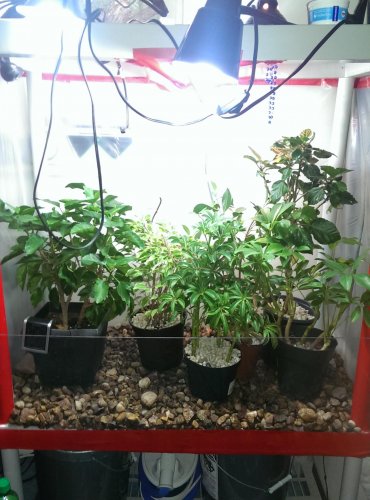jackschamnewbie
New Member
I am undergoing a complete redesign of my enclosure. I have an a drain table with 6"+ of plexiglass surrounding the base. I have screened it over and placed a series of rocks at different sizes from largest to smallest.
I am wanting to place the root balls of my plants onto the rocks and backfill with organic soil. I am hoping that this will enable me to use less water every day and provide aditional humidity. I am assuming that fans placed at the hermetically sealed top will draw air up through the cold and wet rocks/soil and create a natural swamp cooler effect.
Has anyone had sucess with this and chameleons? I have only seen this used for frog vevariums that require good air flow, high humidity and low temperatures
Picture shows the pots on top of the rocks. I am hoping to get rid of the pots entirely. I realize that this will reduce the vertical size to roughly 30" however this is easily changed with additional legs and poly. As well as that is still retartedly huge for a 5m old jacksonii jacksonii
I am wanting to place the root balls of my plants onto the rocks and backfill with organic soil. I am hoping that this will enable me to use less water every day and provide aditional humidity. I am assuming that fans placed at the hermetically sealed top will draw air up through the cold and wet rocks/soil and create a natural swamp cooler effect.
Has anyone had sucess with this and chameleons? I have only seen this used for frog vevariums that require good air flow, high humidity and low temperatures
Picture shows the pots on top of the rocks. I am hoping to get rid of the pots entirely. I realize that this will reduce the vertical size to roughly 30" however this is easily changed with additional legs and poly. As well as that is still retartedly huge for a 5m old jacksonii jacksonii



